You are currently browsing the archives for October, 2012.
Last year’s Halloween costume was a disaster. I won’t go into the details because I don’t want any of you to attempt such a thing, but let’s just say it involved sticking a highly unwilling infant in a fruit basket surrounded by vegetables.
This year had to be better as last year was pretty much rock bottom. In the quest for the perfect costume that was easy, cheap, homemade and darned cutie-pa-tootie, I was quickly running out of time. But that turned out to be okay because this costume only takes about 30 minutes to put together once you’ve gathered the supplies.
So, without further ado….
introducing…..
The Itsty Bitsy Spider
aka Baby Octopus (with minor adjustments)


To make this DIY costume you will need:
a warm black shirt or sweater
warm black pants
6-8 black knee socks
a pile of fabric scraps
6-8 black saftey pins
60-80 small size furniture pads (opt for octopus variation)
To make this costume:
Decide if you want to make six or eight stuffed spider legs/ octopus arms. I suggest doing six if your baby is not yet mobile and will be sitting; make eight if you little one is a toddler that will be standing and walking around, thus obscuring his own legs. You want eight total legs to be visible.
Stuff the socks with all manner of rags. I used washcloths, cloth napkins, cloth wipes (clean I promise!), other socks, and even some old underwear. You aren’t going to see it, so it doesn’t matter what it looks like. Stuff them to about the height of your little one’s legs. If you make them too long, she might trip on them. For the octopus variation, attach two rows of furniture pads on each sock. If you have a baby that loves to pick at things, you might want to attach these with a hot glue gun.
Attach the stuffed socks to the black pants with saftey pins. Stuff any extra sock inside the pants.
Dress your little one in the black shirt and carefully pull on the pants.
Step back and admire. Do a victory dance for making such a cute costume at the last minute. Maybe sing the Itsy Bitsy Spider song.
Posted 12 years, 7 months ago at 10:42 am. Add a comment
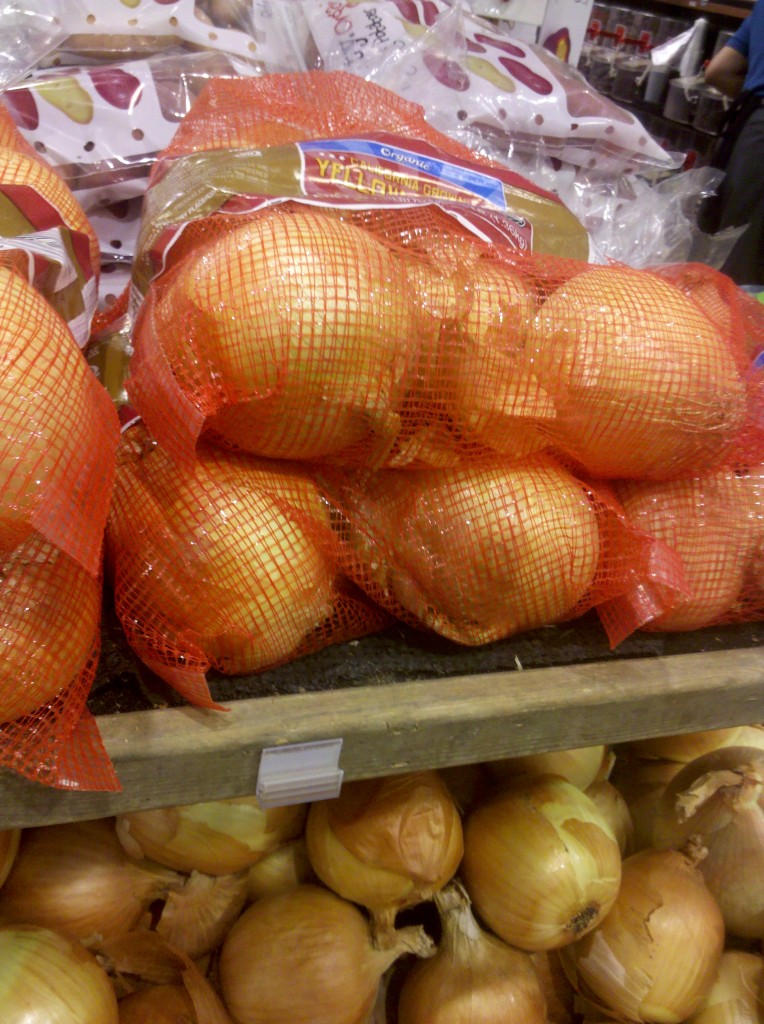
Even though I try to buy my produce as packaging free as possible, there are times that the item I want is only available encased in one of those plastic mesh produce bags.
I used to hate buying these things so much that I’ve changed my dinner plans in order to avoid them. In most areas these aren’t recyclable, so into the trash they must go and then on to a landfill– where I imagine all manner of creatures getting stuck in them. So if potatoes were only available in such a bag, it would be sweet potatoes in the soup that night instead.
Sometimes, though, no viable alternative was available. In that case I’d buy the mesh encoffined produce and stuff the bag deep in a kitchen drawer to avoid throwing them away. I forgot about them. I even moved across the country with these bags. So maybe it was more like I repressed them.
Until the day I was out of plastic snack bags to take Theodore’s raisins in to the park. Out came the mesh bag and plastic closure. And you know what? It was perfect.
Necessity is the mother of all sorts of things that will get you weird side long looks from other people.
Since that day, I’ve begun to relax about buying these mesh bags. I don’t go out of my way to buy them, but when they do end up in my kitchen they are a resource for all sorts of things.
Ways to Reuse Plastic Mesh Produce Bags
- A snack baggie for anything raisin sized or larger. Granted, this might not be the best option for something like crackers that you need a more solid enclosure to catch all the crumbs. But for dried fruit it works great. Simply leave the bag intact, plastic closure and all, and use in place of plastic baggies.
- A fine motor skills game for your toddler. I discovered this by accident when Theodore got hold of one of my new raisin baggies and started picking the raisins out through the holes. Simply fill it with small squishable objects that are slightly larger than the hole size. Raisins work well here too. Although I’ve found food works best as most babies want to celebrate their dexterity by putting their prize in their mouth, in a pinch (a.k.a. an eight hour bus ride) I’ve used wadded up bits of paper. (Obviously this might not be the best toy if your baby still puts everything in his mouth and has teeth as he could chew off bits of plastic. Use your judgement parents.)
- A homemade scrubby. The plastic mesh makes an excellent scrubbing surface for dishes. It’s gentle enough to not scratch your china and but also capable of removing the scuz left in your pots and pans. If you have a really sticky or baked on mess, you might want to use the scrubby in conjunction with other methods such as a baking soda scrub or soapy water boil. Also, please note that I don’t own any non stick cookware, so I don’t know if it’s safe for such dishes. If you own some and would like to try it, proceed with caution … and then report back to me as I ‘d love to know! Here’s a tutorial for making a classy scrubby that won’t get mistaken for trash on your counter top. Or you could just cut off both ends, stuff three or four into one, and knot both ends. Your scrubby would work equally as well cleaning your tub as it does your dishes. Though perhaps you’d want two separate scrubbies…
- A bath toys holder. The larger potato and onion bags are the perfect size for holding Theodore’s bath toys. An added plus is that oftentimes they already have string attached so it’s easy to loop the collection over the shower head. They drip dry, don’t mold, and don’t spill curiously cold water over my toes during my shower.
- Excess produce storage. If you have a garden or belong to a productive CSA and find yourself asking Google “how to store produce” at the end of the season, these mesh bags can be the perfect answer. Produce like onions, potatoes, and garlic need airflow in order to keep well. Even if you are lucky enough to have a stellar root cellar, you still won’t get the longest life out of these vegetables if you just plop them in a box. While the pantyhose method works well, it looses it’s repurposing charm if you have to go out and buy pantyhose to do it. Instead, you can put your potatoes, onions, and garlic in mesh produce bags and hang them on hooks or nails.
- Produce bags. This one is so obvious I feel silly including it, but since it took me quite awhile to realize this, I thought it worth saying. Mesh produce bags make excellent… produce bags. If you’re already in the habit of bringing your own canvas bags to the store, it’s easy to stick a few of these mesh bags in to use instead of the tear off plastic ones in the produce department. What if, like me, you’ve already been forgoing the plastic bags and tossing loose onions into your cart? Well, keep doing that if it’s working for you. For me though, it was getting increasingly difficult to finagle all those onions and lemons past little toddler fingers. Also, with French Onion Soup season coming up, I’m sure your clerk will appreciate not having to corral ten onions onto the checkout scale.
Do you have any packaging that you go out of your way to avoid? If you do buy it, how do you reuse it? Anyone else have a guilt complex about excess packaging?
Posted 12 years, 7 months ago at 3:00 pm. 5 comments
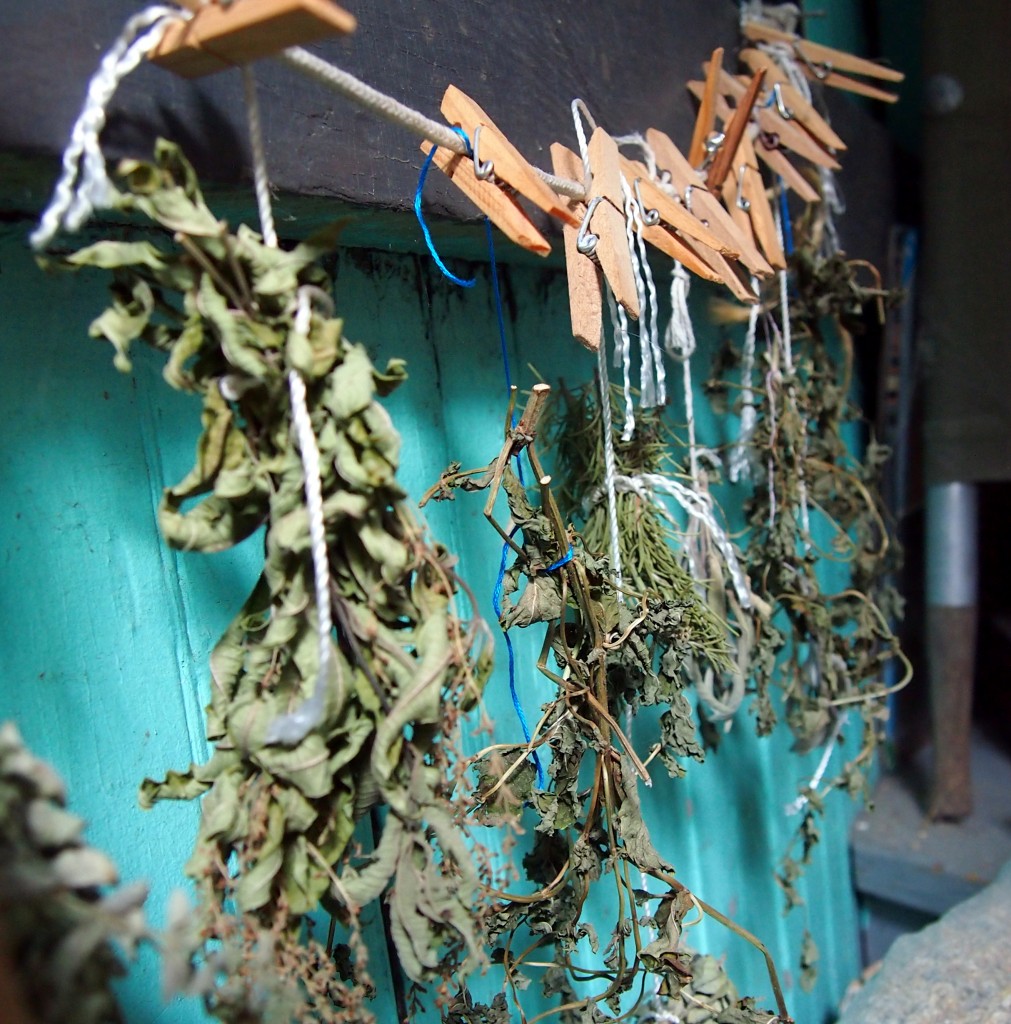
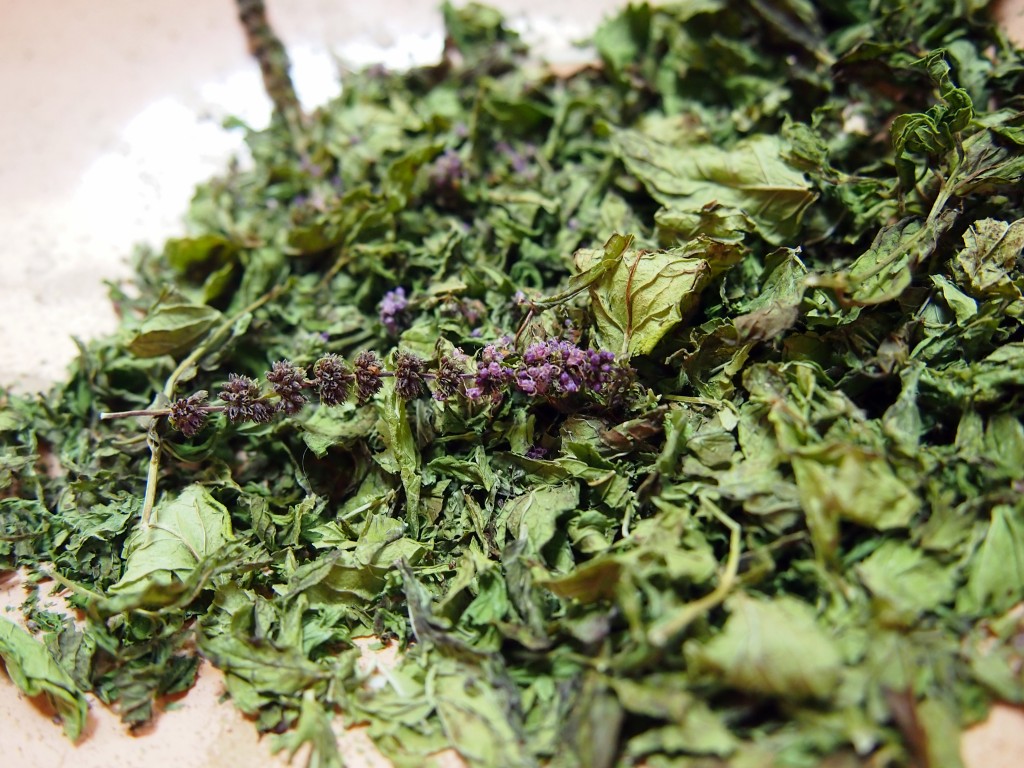
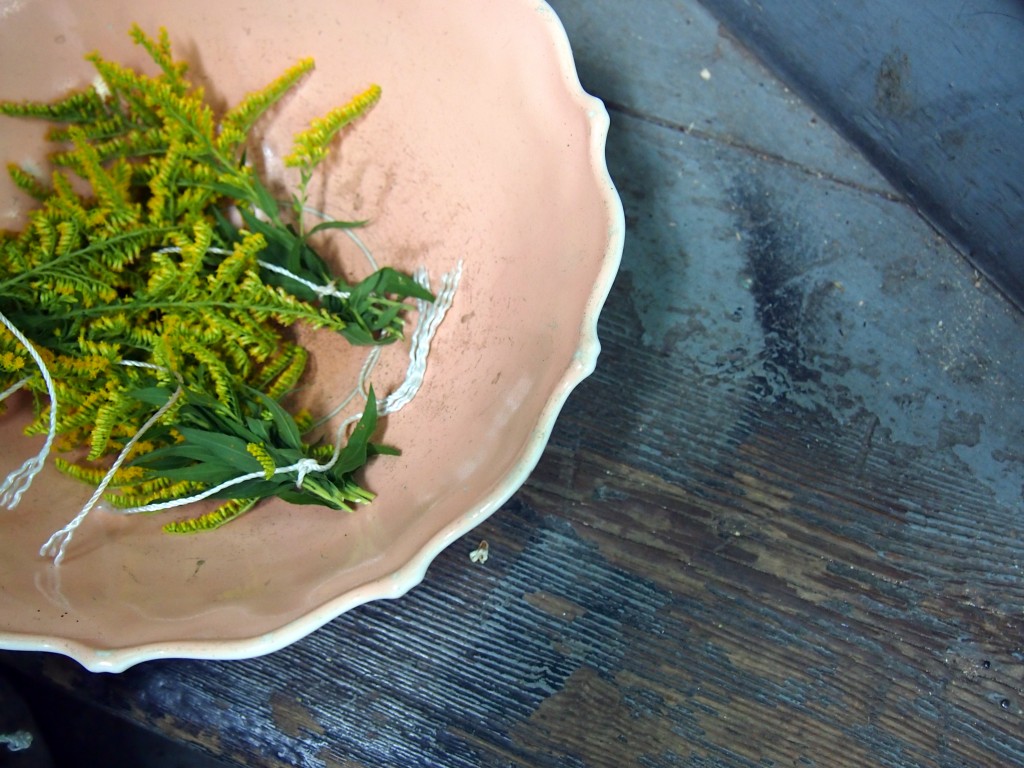 It’s been over a year since I officially threw in the plow on vocational farming. One of the things I miss the most is the weekly harvest days before market. We carted, pulled, and dragged vegetables into the barn. They sat in piles. Stacks. Sometimes even pyramids. All waiting to be
It’s been over a year since I officially threw in the plow on vocational farming. One of the things I miss the most is the weekly harvest days before market. We carted, pulled, and dragged vegetables into the barn. They sat in piles. Stacks. Sometimes even pyramids. All waiting to be washed hydro-cooled. In a matter of hours, each zucchini, each carrot, each collard would be inspected, bundled, and placed in cold storage. At the end of the day, sometimes I would have to catch my breath at the sheer number of vegetables my hands had touched that day.


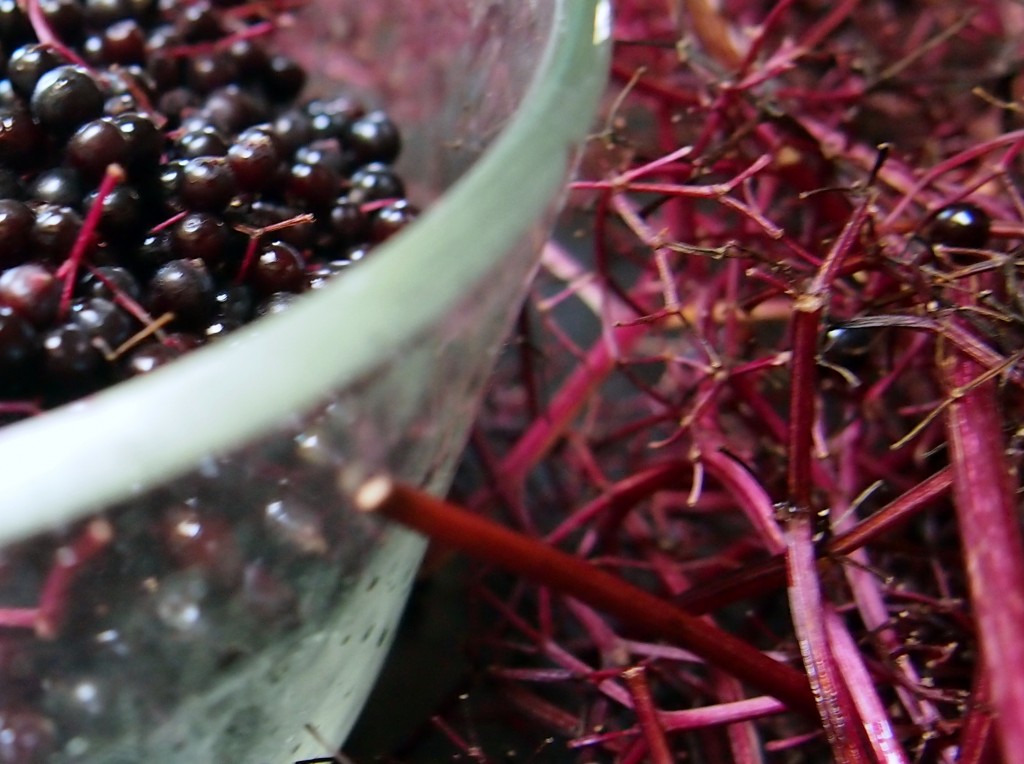
Sometimes it was easy to become desensitized to the volume of produce. During the height of summer, five pounds of basil would roll around our counters like change in your pocket. Even making a triple batch of pesto would hardly make a dent in the supply. And then another tidal wave of the peppery green leaves would break the next day.
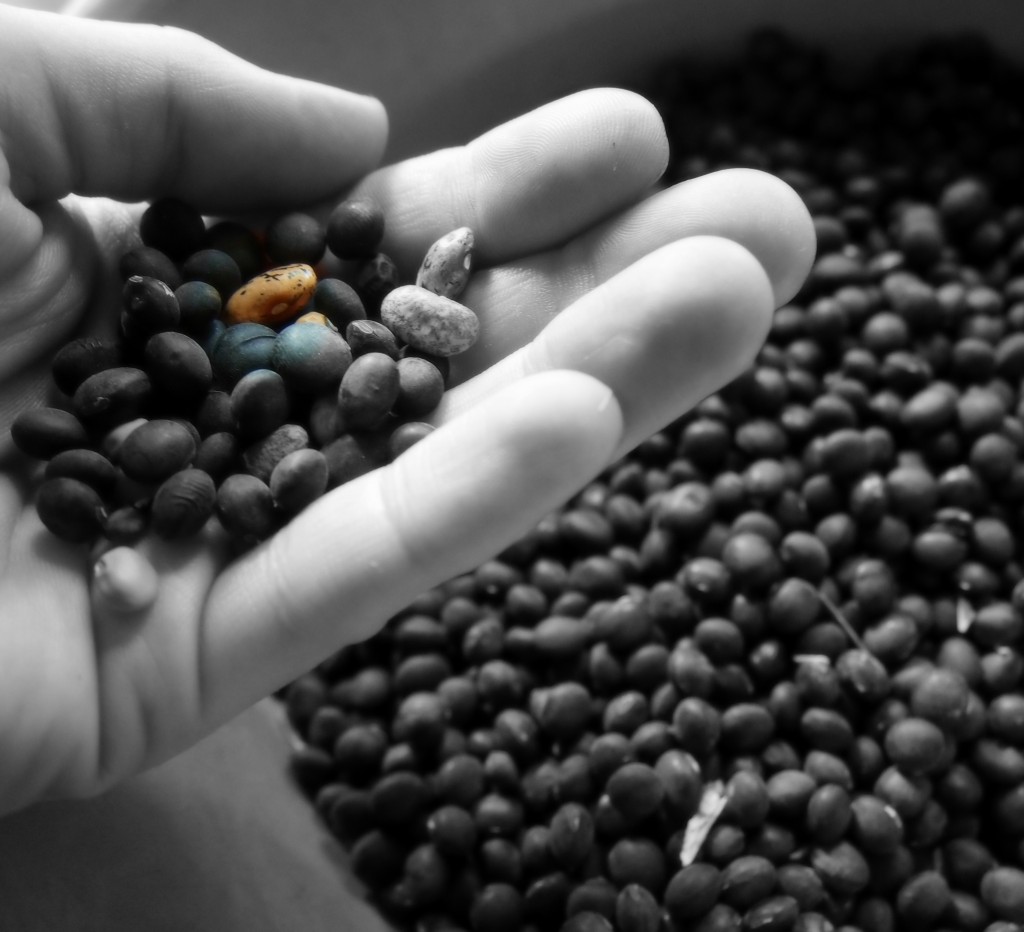
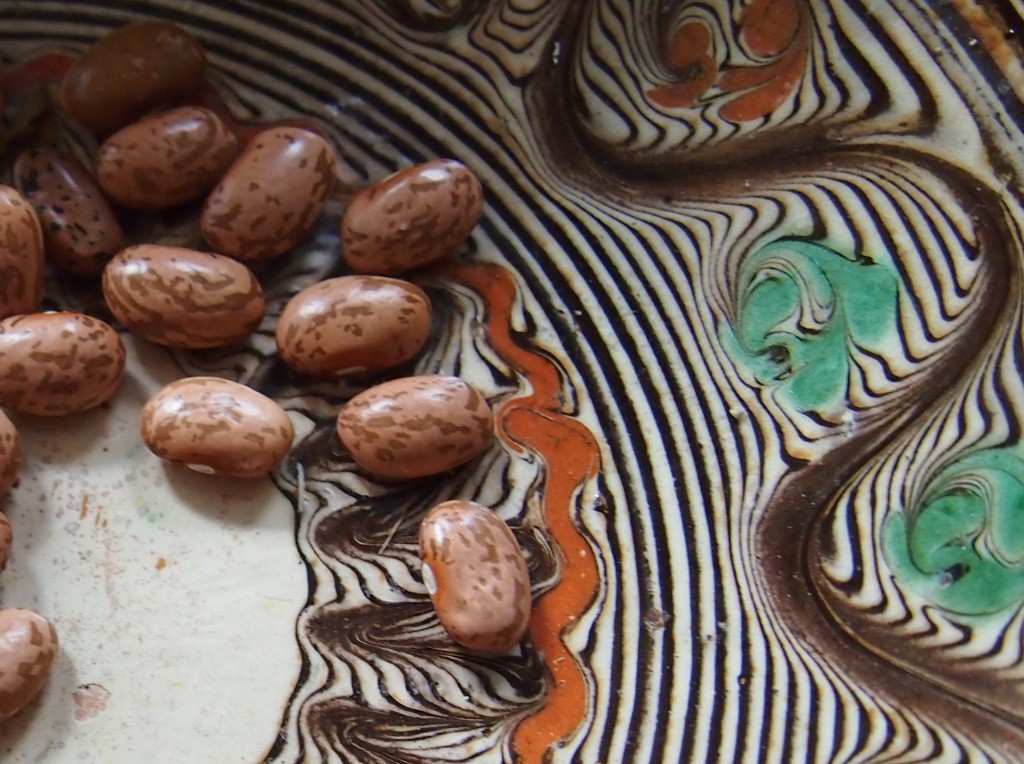
While my partial-sun window boxes have kept in a a mostly steady supply of mixed herbs, my eyes have itched for the cartloads of butternut squash and coolers full of greens. I’ve had to borrow my bounty this year from friends and family.
I’ve clipped and hung herbs to dry, sorted jars of heirloom bean varieties, forked elderberries off their stems, snipped oatstraw into pieces, pulled hops flowers off their vines till my hands were stained and smelled of ginger and garlic, rubbed nettle leaves off their stems till my hands ached and itched, and shuffled through the yard bent double gathering black walnuts. Though I’ve yet to use a cart this season, the harvest has been brought in using baskets, five gallon buckets, baking trays, coat pockets, window screens, bowls, and impromptu shirt “baskets.”
The harvest is abundant indeed.
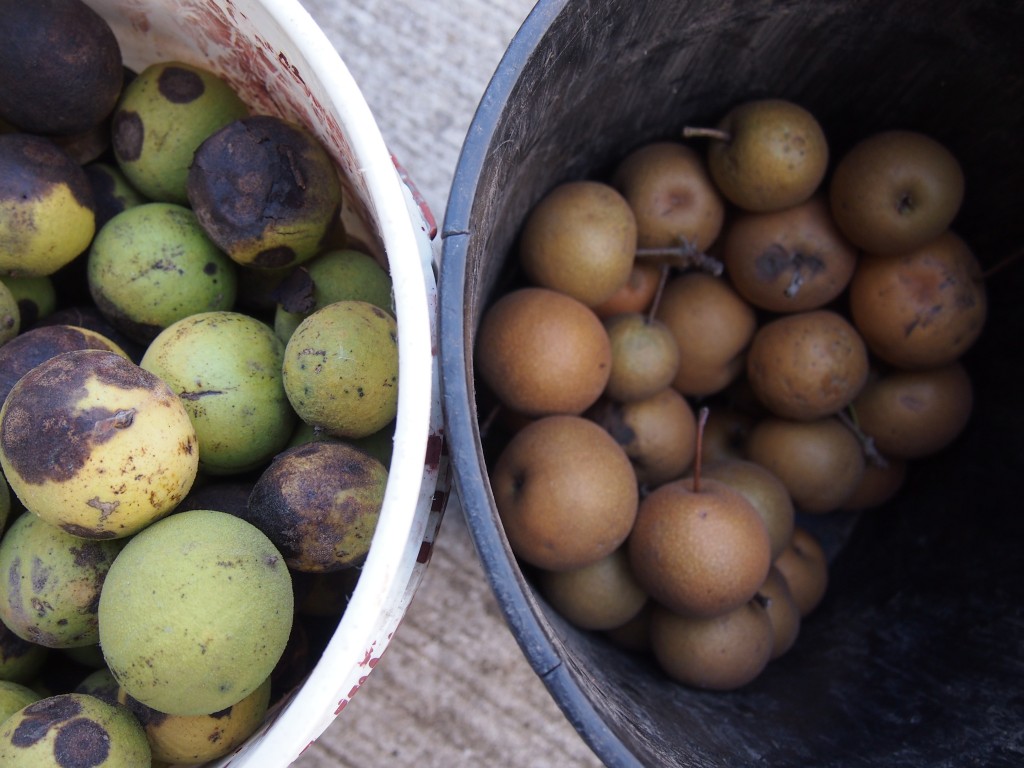
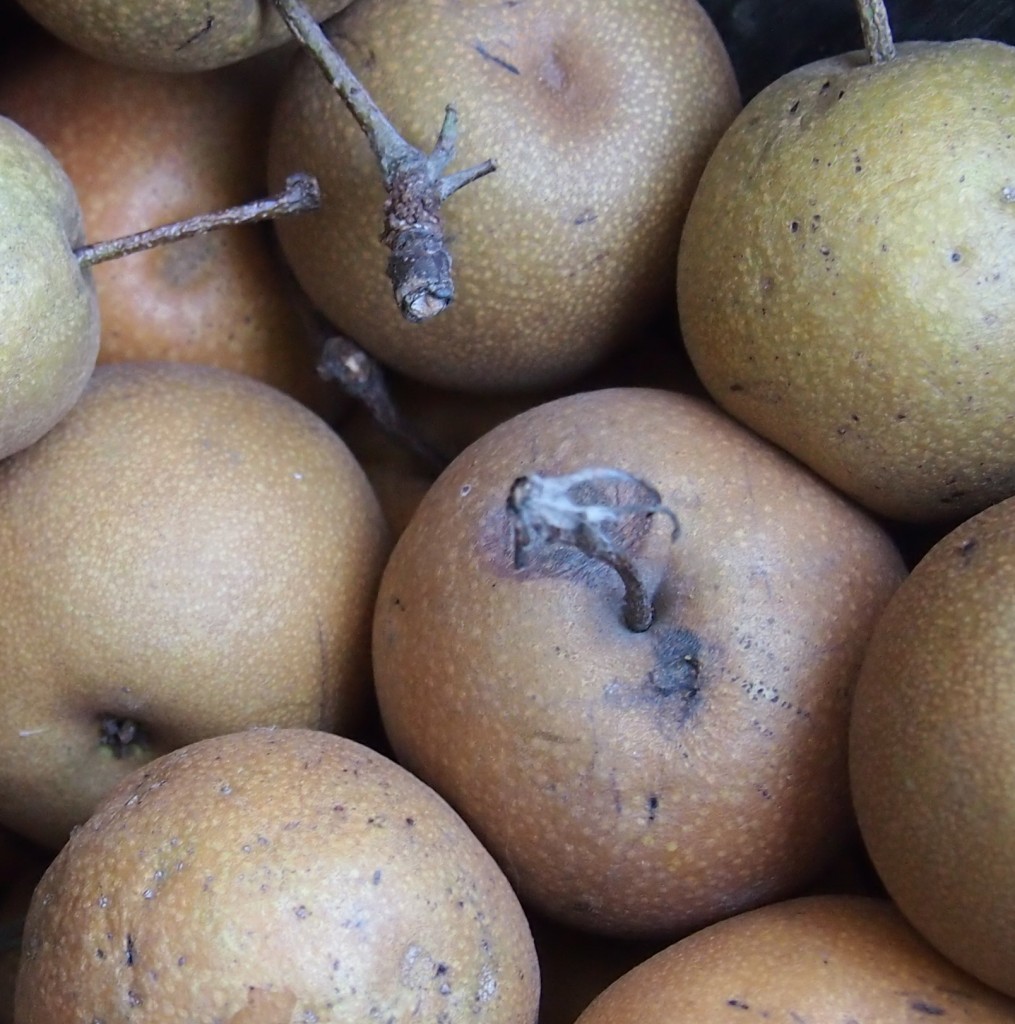
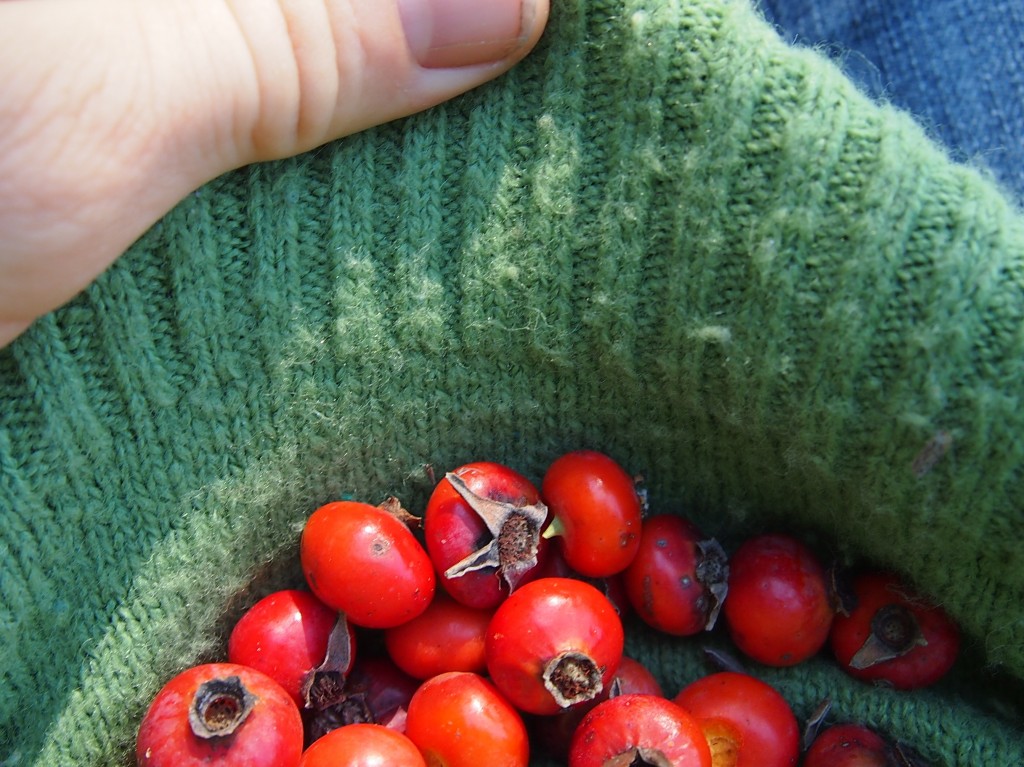
Posted 12 years, 7 months ago at 5:13 pm. Add a comment
“No one does everything.”
Like bird seed, this statement is flung casually about as encouragement whenever someone is discouraged by how messy her house. Other times it’s a warning scattered across the path of someone with new heady visions of homesteading. While it is a truth seemingly universally acknowledged, it is rarely admitted.
With the internet being the way it is, it’s easy to focus on our successes. To crop the picture just right so as to include the lovely salad but not the grungy stove. Or include the baby with the adorable hat but not yourself with unwashed hair. We pretend at perfection by omission. We hope other people’s imaginations will fill in the cropped out details with snippets of magazines, store windows, and commercials. Then by some awful double standard that is so hard to shake, we assume other people are not as careful croppers as we are. That their truth is different than ours. More perfect.
So yes, “No one does everything!” we chirp to one another, scattering the phrase further. Yet it often just lies there in a pile waiting till we need to peck at it again to ease the guilt. Rarely does it root and blossom into more than an excuse for imperfection in someone’s life, giving her freedom to focus on what she loves and leave the rest.
With that spirit, here is a list of things that are often cropped out of my pictures:
30 Domestisities I Don’t Do
- I don’t wash the pot lids every time I use them.
- I don’t fold underwear.
- I don’t use serving dishes, or sometimes even personal plates at dinner.
- I don’t dust.
- I don’t iron unless it’s an Event like graduation or my own wedding.
- I don’t wipe down my baseboards.
- I don’t wash my colander after each use.
- I don’t wipe handwashed dishes; I let them air dry.
- I don’t organize my sock and underwear drawer.
- I don’t go to the gym.
- I don’t clear off my desk regularly.
- I don’t vacuum under the big living room rug.
- I don’t wipe down my counters and shine my sink every night.
- I don’t have a skin care regimen or use make up.
- I don’t chase after
every most cat fur tumbleweeds.
- I don’t always separate my lights and darks.
- I don’t finely mince my garlic.
- I don’t fold Theodore’s clothes at all; at best they get separated into pants and shirts.
- I don’t peel my carrots.
- I don’t always wash my shirts just because I’ve worn them; if they smell fine, back into the drawer they go.
- I don’t match my sheets and pillowcases.
- I don’t match my kitchen towels, oven mitts, and wash clothes.
- I don’t keep separate “guest” towels.
- I don’t schedule weekends of spring cleaning.
- I don’t usually give thrifted items that new coat of paint that would take them from grubby to shabby chic.
- I don’t style my hair. I don’t even own a blow dryer.
- I don’t have a well organized entryway with pretty hooks and creative cubbies. I have nails and some string.
- I don’t set the table every night. Forks and spoons get piled in the middle of the table and everybody gets their own glasses.
- I don’t regularly mop anywhere but the kitchen; even there it isn’t quite what you’d call “regular.”
- I don’t have an intricate filing system for bills, statements, and other mail. Mostly it’s just a pile.
What things do you leave undone so you have time for what’s important? What are those important things?
Posted 12 years, 8 months ago at 10:53 am. 5 comments
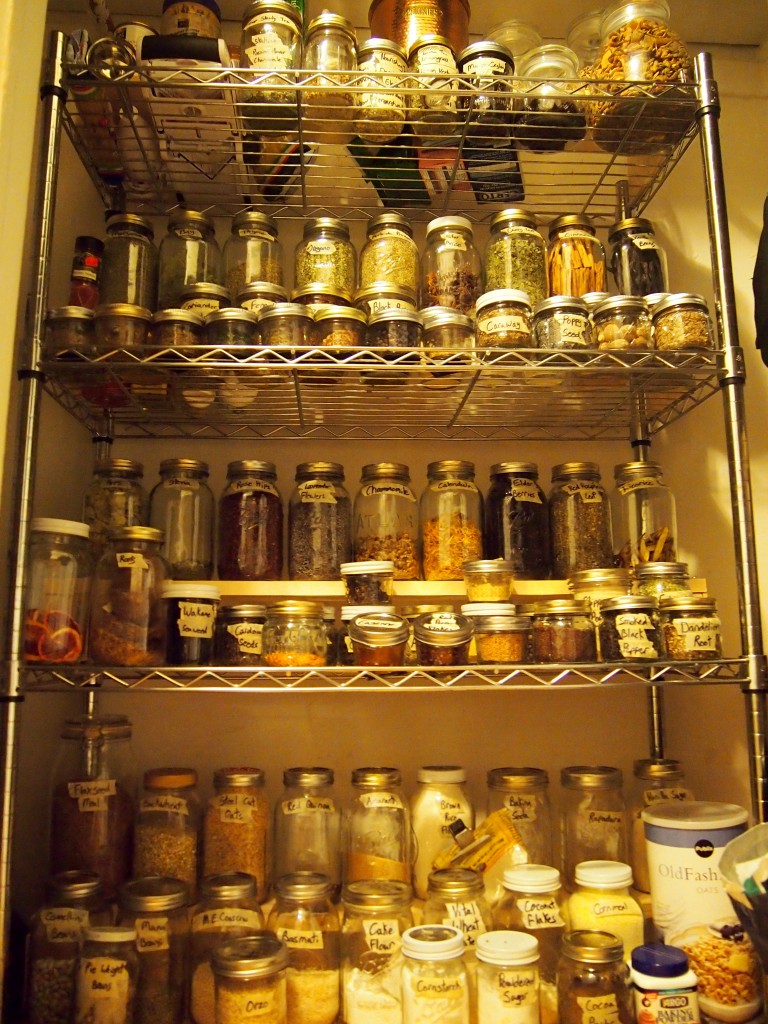 I have a deep love for “the pantry.” My favorite part of period films and shows like Pride and Prejudice and Downton Abbey is the peeks into inner kitchen workings and the hallway-like pantries. Proper food storage in those days was a big deal because often one couldn’t just run to the store to replace something that was spilled, moldy, or stale. What I especially like about them is that the food contained in such pantries is actual food, not packets, powders, and packages.
I have a deep love for “the pantry.” My favorite part of period films and shows like Pride and Prejudice and Downton Abbey is the peeks into inner kitchen workings and the hallway-like pantries. Proper food storage in those days was a big deal because often one couldn’t just run to the store to replace something that was spilled, moldy, or stale. What I especially like about them is that the food contained in such pantries is actual food, not packets, powders, and packages.
The kitchen gods have never seen fit to bestow on me a proper walk-in pantry with flour bins built into the cupboards and pie shelves . The closest I got was a large kitchen closet at our last place. Even though there was plenty of square footage, it wasn’t properly laid out for easy storage. The shelves were several feet deep which made everything hard to see and therefore organize. Added to the problem was my habit of buying most of my dry goods in bulk. I constantly have little dribs and drabs of different grains, flours, spices, ect. A knotted up bag of flour doesn’t stack as easily as all those neat rectangular boxes of Cheerios.
Whenever I would turn to the interwebs for organizing wisdom, I could never find helpful advice for pantries built around bulk buying. Even the organizing Mount Olympus of Pinterest refused to send me messages in my bulk bought tea leaves. Like some kind a snarly sage, whenever I would inquire of “pantry organization,” it would spit back unhelpful pictures like these:
While most of them were visually pleasing and very well organized (and I especially love the creative use of a shoe rack) they were not helpful for my slouchy bag problem. After some trial, error, rearranging, more error, and some reflection, I’ve gathered a few tips I wish I’d known before I started my pantry.
Tips for Organizing a Bulk Foods Pantry
- Become a canning jar hoarder.
The worst thing you can do is leave all your bulk purchases in the flimsy plastic bags in which you bought them. Actually, the it’s worse if you failed to write the actual name down, not just the product code! (5546? How on earth do you cook 5546?) If you’ve read anything about general organization, you know that the easiest way to make a group of disparate items look organized is to put them in matching containers. While you may choose any container you’d like, I’m partial to the humble canning jar. They are easily available and relatively cheap, especially during the summer months. They come in all different sizes so it’s easy to accommodate anything from precious pinches of saffron to pounds of black beans. Unlike plastic, the glass won’t hold onto strong smells like garlic powder, so it’s easy to reuse them for other foods or for different projects all together. They also seal tightly, thus keeping out pantry moths, ants, and even mice.While it’s taken me a few years to build up such a stash of jars, it’s really amazing how fast they multiply once you begin intentionally collecting them. Almost every hardware and big box store stocks them during the summer. You’ll also learn to keep an eye out for them at thrift stores and yard sales. Check around in your community as there may be older ladies who are past their canning prime and have jars they don’t use anymore. The last place I’d buy from is online retailers. Their prices tend to be higher and shipping further whittles away at any economy. Of course, if you’re not obsessive about having identical containers, you can reuse your mayonnaise and Thai green curry jars from the grocery store. Just be sure to air them out well to eliminate any odors. For strong smells, scrub them with baking soda. Always make sure to air dry completely before filling with your bulk treasures.
- Label everything clearly
Be as specific as you can. Is that whole wheat or white whole wheat flour? Bread or pastry? Coarse ground or fine? While it might seem tedious, you’ll be glad of it later when you’re making an angel food cake and need to know if that jar is all purpose or cake flour. If you have the time and inclination, you can be as creative with this as you’d like. I’ve seen many an artful jar that’s been accessorized with chalkboard paint, computer generated labels, and even etching. I however like to keep things both simple and free of commitment. Too often I’ll be obsessed with an ingredient for a fortnight (red quinoa! how I love thee!) only to forsake it for three months thereafter. The exact foods in my pantry are constantly rotating depending on the season, sales at the store, and personal preference. Therefore, I needed a labeling system that was just as interchangeable as my nuts and spices. Old fashioned masking tape and a permanent marker fit the bill nicely. The labels are clear and easy to replace when the contents of the jar change. They also continue the uniformity of the jars.
- Keep your goods in a dark cool space
I know Pinterest is full of charming spice racks set hung over stoves with pots of soup cozily boiling away. But if you are serious about actual cooking not just the appearance of cooking, you will learn to keep your pantry items (and spices especially) away from heat and light. They degrade your bulk items, making them go stale faster. If you don’t have a closet outside the kitchen, at least use the cupboard that’s furthest away from your stove.
- Do your best to make your shelves one jar deep
The problem with most pantry shelves is that they are too deep. Unless you are stock piling cans of soup and bottles of water for emergencies, deep shelves just make it easier to loose things. If you have the space and ability, you could build simple shelves on a wall like Erick and Kelly at Root Simple. Since we’re renting, I wasn’t comfortable putting up so many shelves. And with an ever growing toddler on the loose, I needed something contained. I opted to use a metro shelf and build customized shelves to get the “stadium effect.” (Shelf tutorial to be posted soon!) What’s important is you being able to see all of your jars easily to ascertain what and how much you have.
- Keep like items together
This is something I learned while working in retail. Shelves will look more organized and items will be easier to find. While you will have to figure out what this means for your cooking patterns, for me it meant grouping my jars into categories of spices and cooking herbs, grains, legumes, teas, medicinal herbs, and snacks.
Posted 12 years, 8 months ago at 1:46 pm. Add a comment

















